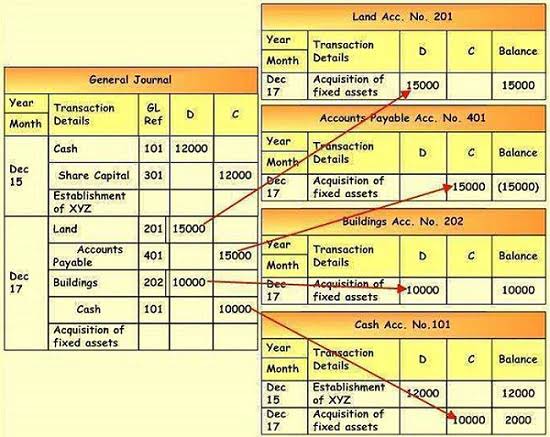Bookkeeping
Opening Balance Equity Experts in QuickBooks Consulting & QuickBooks Training by Accountants

It signifies the owner’s contribution to the business at the inception, distinguishing between personal and business finances. It helps in aligning the business entity’s financial position, making it easier to track the inflow and outflow of funds, and evaluate the overall performance. Understanding opening balance equity is crucial for businesses to accurately track their financial position and ensure compliance with accounting standards. Any errors in recording this account can have a significant impact on a company’s financial statements and may result in penalties or fines. Therefore, it is important for businesses to ensure that their accounting records are accurate and up-to-date. The auditing of Opening income statement Balance Equity accounts is a process that ensures the integrity and accuracy of a company’s financial records.
What Is the Difference Between Opening Balance Equity and Retained Earnings?

For that, you need to add an opening-balance equity account to maintain the accounts equally. If you’re looking for a seamless way to handle bulk credit card payments or complex financial transactions, SaasAnt Transactions can simplify the process significantly. Its robust automation features allow you to import, categorize, and reconcile data with unmatched precision, saving time and minimizing errors. By clearing the OBE account, you maintain professional, accurate, and transparent financial records, ensuring compliance and instilling stakeholder confidence.
- Since you’ve reconciled your account without entering one, this will create a difference between your bank and QuickBooks balances.
- The software is built this way to help with setup and keep your balances in order.
- Clearing the Opening Balance Equity account is not merely a technical task but an integral step in maintaining clean, accurate, and compliant financial records.
- If it is not, this means an unbalanced or unaccounted-for entry in your balance sheet needs to be looked at closer.
Is opening balance equity a positive or negative?
After you enter and check all the opening balances, make a journal entry to shift the OBE what is opening balance equity balance to the right equity account. This keeps your books balanced since the OBE account is meant to be temporary and should end up with a zero balance once everything is set. Opening balance equity account is located under the equity section on a balance sheet and is a special account only used by a computer. After creating the journal entry to transfer the balance in the opening balance equity account to the appropriate equity accounts, the opening balance equity account should have a zero balance, meaning that you’re good. An opening balance is the amount in a financial account when a new period begins, like a new year or month (it also applies to when you set up a new company file in QuickBooks).
- – When you make the first entry in their accounting software and connect it with your bank to import all the transactions into the software, that is when this account is created.
- For example, if a new owner invests cash into the company, the cash account is debited, and the Opening Balance Equity account is credited for the same amount.
- Since reconciliation works differently in QuickBooks Desktop for Mac and QuickBooks Online, some transactions may get unreconciled.
- By reconciling accounts, businesses can also maintain a clear audit trail, ensuring compliance with accounting standards.
- I’ll chime into this conversation and share some information about the Opening Balance Equity (OBE) account in QuickBooks Online (QBO).
- Opening Balance Equity accounts show up under the equity section of a balance sheet along with other equity accounts like retained earnings.
Subscribe to our newsletter for the latest accounting insights and updates
- The image below shows where you can enter the opening balance for a new account, which you should never do.
- QuickBooks uses this account to maintain the equality of debits and credits when a one-sided entry is entered in the form of a beginning balance in an asset or liability account.
- Your opening balance will be the closing balance of the last reporting period, ideally, zero, with all accounts balanced.
- QuickBooks’ reconciliation tool and automation can make the process easier.
- Leaving unadjusted amounts in the OBE can distort your financial statements, making it harder to accurately assess your business’ financial health.
- To ensure everything is recorded correctly, it’s best to consult a bookkeeper or collaborate with other accountants for further assistance.
This can occur if the bookkeeper did not properly close out the previous accounting period. To fix this issue, the bookkeeper should review the general ledger and make sure that all prior account balances are accurate. It will also be your contributed capital, which should be later transferred to a proper account. Make a journal entry to transfer Opening Balance Equity to an equity account that’s more aptly named, such as Contributed Capital.


Whenever a company gets bookkeeping for cleaning business part of the cash from loans or other financing facilities, then the accountant should increase the liability on the credit side of the journal entry as this reflects the debt. This should be done carefully after analyzing the chances of the loan being repaid within one year. An OBE account may cause confusion with financial statements, showing a temporary number that looks unprofessional and an unbalanced journal entry that needs to be reconciled. So if you post a new asset account with a balance, you’d need to offset it by the same amount on the other side of the equation when you first bring balances into accounting software. Using accounting software can help you figure out what is missing, or you can fill out an accounting template and see the numbers in front of you.


